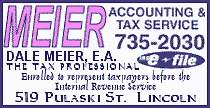|
"In this manner, calf and feeder prices can eventually recover,"
said Chris Hurt. Hurt's comments came as he reviewed the
cattle industry outlook for 2007, the most prominent feature of
which is the painful adjustment to much higher feed prices.
"This will include sharply lower calf and feeder cattle
prices, perhaps some further trimming of the beef cow herd, more
backgrounding of calves before they enter feedlots at higher
weights, and adding distillers grains to rations," he said.
Beef production in 2006 was up 5.6 percent, with slaughter up
4.0 percent and weights up 1.6 percent. Higher feed prices in
the last quarter of the year caused cattle to be marketed at
weights that were up only about 8 percent. Nebraska choice
steers averaged $85.40 per hundredweight, compared with $87.28
in 2005. Steer calf prices at Oklahoma City averaged $128,
versus $132 for the previous year.
"For 2007, beef production is expected to increase by about 2
percent," said Hurt. "Nebraska finished steer prices are
expected to average in the $85 to $89 range, about one to two
dollars higher than last year.

"Beef exports are expected to increase by nearly 25 percent
and rise to their highest level since BSE-induced restrictions
at the end of 2003. USDA is currently forecasting beef exports
at 1.4 billion pounds for the year, which is still just 57
percent of the 2003 level."
Beef producers had started to increase the breeding herd in
2004 and 2005, when cow numbers increased by 132,000, a very
modest 0.4 percent. Cow-calf producers reduced the cow herd by
nearly 100,000 cows in 2006, offsetting most of the increases of
the previous two years.
The largest decreases were in Texas (152,000), Oklahoma
(75,000) and in Missouri (60,000). The largest increases were in
Kentucky (89,000), Colorado (50,000) and Tennessee (43,000).
Eastern Corn Belt numbers rose by 20,000 head, with Indiana up
17,000 and Wisconsin up 15,000. However, Illinois numbers were
down 19,000.

Milk cow numbers were up by 0.7 percent -- more than
anticipated given the low milk prices in 2006 and high feed
costs. Leading expansion states were Idaho (29,000), Iowa
(23,000), Texas (22,000) and California (20,000). In the eastern
Corn Belt, numbers were up by 25,000 head, led by Michigan
(12,000), Indiana (8,000) and Wisconsin (5,000).
"The 2006 calf crop was unchanged from 2005 at 37.6 million
head," said Hurt. "The number of cattle in feedlots is currently
up 1 percent, so this leaves somewhat fewer calves outside of
feedlots than one year ago.
[to top of second column]

 |
 "Higher feed prices have resulted in a sharp drop in feedlot
placements in recent months. Placements started down in September
and in the last four months of 2006 averaged about 9 percent lower
than in the previous year."
On Sept. 1, the number of cattle on feed was up about 10 percent,
but by January that number was up only 1 percent. The largest
reductions in placements in the last quarter of 2006 were for
lighter weight calves. Placements of calves weighing under 700
pounds were down 13 percent.
"Higher feed prices have deeply depressed calf and feeder cattle
prices," Hurt noted. "Steer calves at Oklahoma City were $11.77 per
hundredweight lower in the final quarter of 2006 compared to a year
earlier. Heifer calves were $14.32 per hundredweight lower.
"Feeder steers were down $11.63, while feeder heifers were down
$11.19 per hundredweight. During January 2007, those prices were
continuing to run $11 to $15 lower than in the previous year."

For 2007, finished cattle prices are expected to average about $2
higher than in 2006. By quarter, prices for Nebraska steers are
expected to average about $87 in the first quarter, $90 in the
second quarter, $85 in the third quarter and $88 in the fourth
quarter.
"Highs in late March and early April may extend into the low
$90s," said Hurt. "These price projections are several dollars under
what futures market prices were suggesting as of Feb. 2. Futures may
be providing favorable hedging opportunities.
"Calf prices are expected to be about $10 to $12 lower than last
year. This would put Oklahoma City steer calves in a range of $115
to $120 for the year and feeder steers at $95 to $100 per
hundredweight. Eastern Corn Belt prices tend to be $2 to $4 lower."
Hurt said some contraction in the breeding herd may also continue
in 2007 as calf prices remain under pressure and forage prices rise
along with corn and soybean meal prices.
"Forage prices will rise because more land is being diverted
toward crops that produce liquid fuels, thus reducing hay and forage
acreage," he said. "Weather in 2007 will also be a major factor in
the direction of the beef industry.
"Weather will affect not only pasture and forage output, but also
prices for corn and soybean meal. Harmful weather would likely push
calf and feeder prices lower."
(Text copied from file received
from the University
of Illinois College of Agricultural, Consumer and Environmental
Sciences)

|